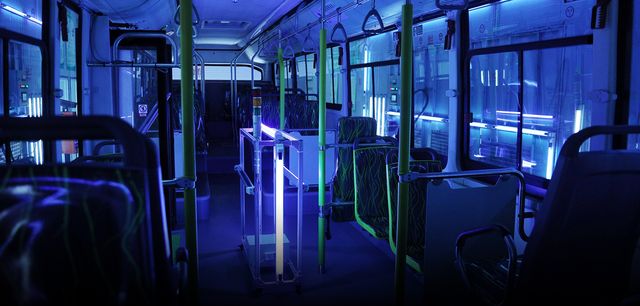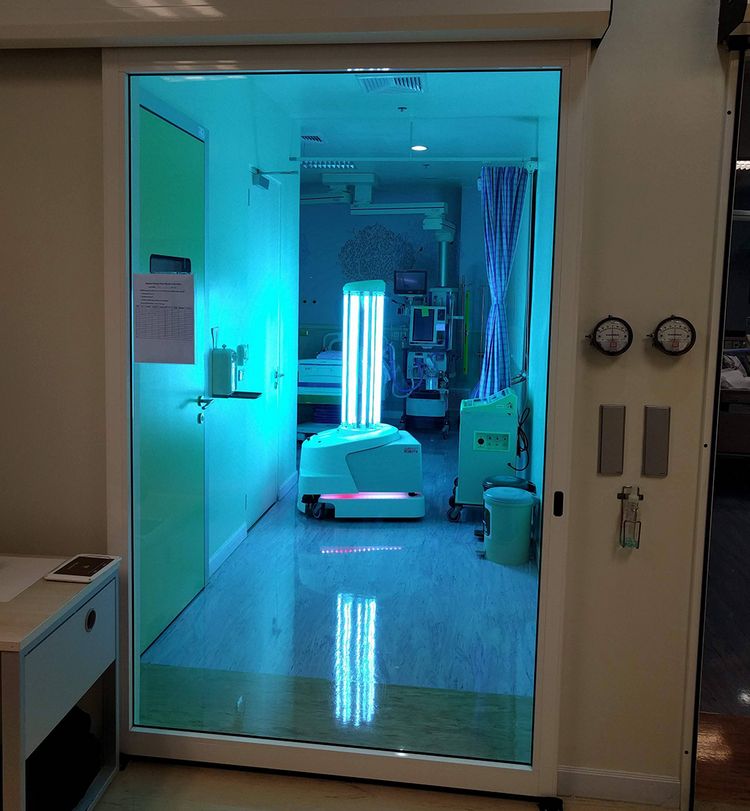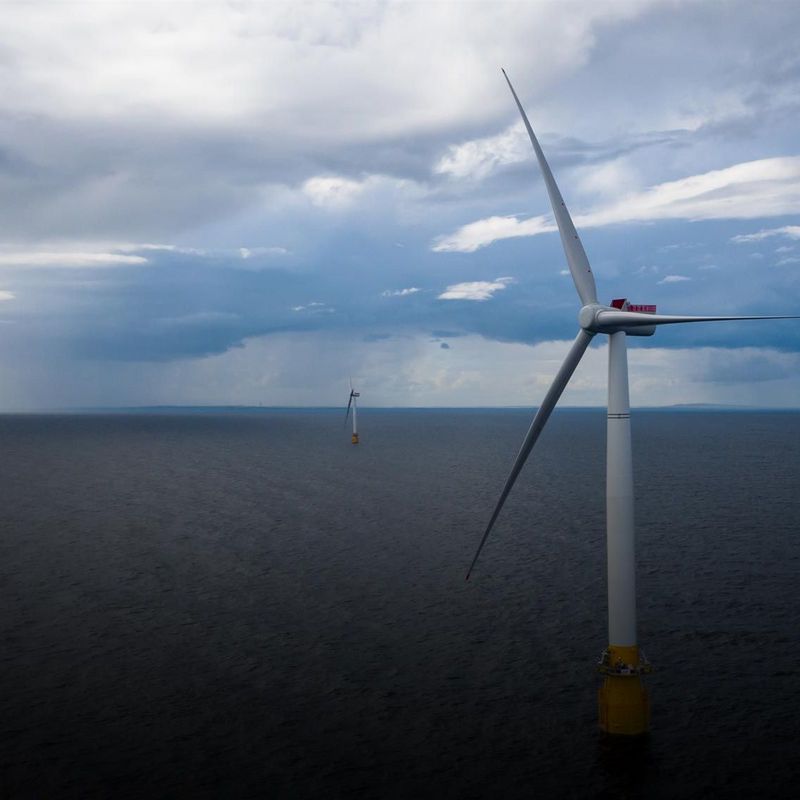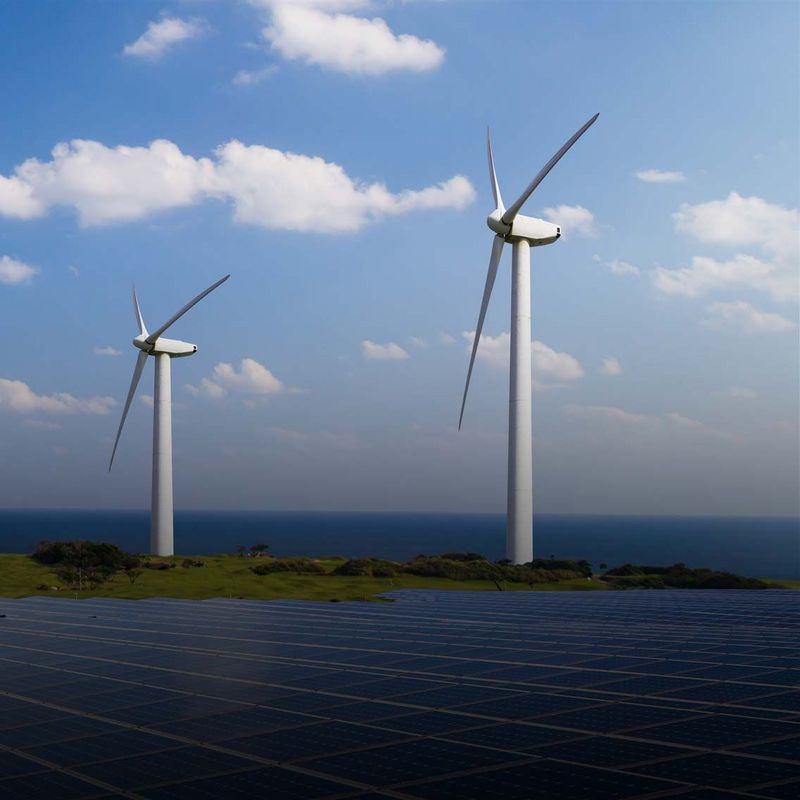15 October 2020
Light is held by various religions to be a symbol of the divine and of purity. In practical terms, light can do more than just dispel darkness or depression – it can also eradicate pathogens. Ultraviolet light is capable of killing viruses, bacteria and germs. With the advent of the coronavirus pandemic, attention has shifted more intensively to lamp-based disinfection.
That light is not to be trifled with is something you notice, not least, when you get sunburn. However, the visible parts of the sun's rays, which arrive on Earth in the form of the colours of the rainbow, have nothing to do with it. Sunburn is caused by particularly energy-rich ultraviolet rays, which we can’t perceive with the naked eye due to their short wavelength.
Ultraviolet radiation is divided into three ranges from A to C, where the wavelength diminishes, and energy increases, as you move from A to C. UV-A rays and ten percent of UV-B rays make it as far as ground level, where they cause the skin to age and can damage eyes or cause skin cancer. These hazards are amplified with particularly high-energy UV-C light, with its wavelength of between 100 and 280 nanometres. However, we don’t need to protect ourselves from it when we go about our daily lives or go on holiday. This is because UV-C rays are absorbed by the atmosphere's ozone layer.
Since UV-C radiation does not occur naturally on our planet, pathogens have not developed strategies to withstand it. It’s for this reason that artificially produced UV-C light can penetrate unfiltered into viruses, germs and bacteria: It damages the genetic material of the microorganisms, meaning that they can no longer reproduce, causing them to die. This penetrating effect is not new to science. In fact, UV-C light has been used for years to disinfect bathing or drinking water.
© imago0098534983hHow UV-C light hunts down viruses, germs and bacteria.
Drinking water disinfection in New York and Mülheim an der Ruhr
The largest UV-C system of its kind is to be found about 20 kilometres away from New York City. Since 2013, the Catskill-Delaware treatment plant has been using radiation to disinfect the water used by nine million people. Every day, 7.5 billion litres of water flow past 11,760 UV lamps. The general principle here is this: for the radiation to actually strike the bacteria, viruses and germs, clouding or colouring particles must first be filtered out of the water. It is for this purpose that, in the Styrum-Ost and Styrum-West waterworks in Mülheim in the state of North Rhine-Westphalia, the water of the Ruhr river is first routed through sand filter basins and then irradiated with UV lamps – chlorine is only used for disinfection purposes in exceptional cases.
Breweries also deploy UV light to rid the water used in their beer of pathogens. The brewing water is passed through stainless steel pipes with built-in UV lamps. Especially in Asia and North America, mobile devices or UV-C robots are already being used to disinfect air and surfaces in laboratories, hospitals and offices.
Boosting the economy in the age of coronavirus
With the coming of the threat posed by coronavirus, this technology, which has until now been quietly radiating away in the background, is increasingly attracting public interest. Since the outbreak of the pandemic, a transport company in Shanghai has been using UV light to disinfect its buses. The vehicles queue up in a kind of long car wash, where they are irradiated from the outside by permanently installed lamps and inside by mobile lamps. The process lasts just five to seven minutes and can destroy 99.9 percent of the viruses. This is considerably cheaper and faster than conventional methods, according to transport operator Yanggao.
And yet, UV radiation can’t yet completely replace good old manual work. This is because the limits of light disinfection are basically to be found wherever there are shadows – in other words, wherever the rays don’t reach. After irradiation, the seats and the handles in the buses are wiped down and sprayed once again by hand to get at the pathogens lurking on them. As the fleet manager told the press agency afp, up to 250 buses can be disinfected every day using this method.
In the meantime, other transport operators and local authorities have also discovered UV-C light for themselves. In June, for example, the Metropolitan Transportation Authority (MTA) in New York expanded a pilot project to disinfect its subway trains using UV lamps. At the end of August, the city of Hanau in the state of Hesse concluded a cooperation agreement with lamp manufacturer Heraeus. This local manufacturer’s devices have already been pressed into service in airport ventilation systems in places like Singapore and Shanghai. In Hanau, the air purification equipment might in the future be installed in schools, daycare centres, sports halls and townhouses. A 45-square-metre classroom can be disinfected in about an hour and a half using this procedure, Heraeus claims. However, mayor Claus Kaminsky warns against concluding that the technology is some kind of “magic bullet” against coronavirus. But it could “significantly improve” social coexistence in the uncertain wait for a vaccine.
LED instead of mercury
Up to now, UV-C light has been produced mainly by mercury vapour lamps. The Fraunhofer Institute for Optronics, Systems Technology and Image Analysis, on the other hand, has placed its faith in LED technology. For more than three years, the researchers have been working with special vehicle manufacturer Binz on a system for disinfecting ambulances. Although the LED spotlights are more expensive than classic mercury lamps, they offer a number of advantages, as far as the researchers are concerned. They are vibration-resistant, non-toxic and durable and work at the optimum wavelength between 265 and 270 nanometres – destroying the DNA of the pathogens much more efficiently. And while the mercury lamps first have to warm up, the LED spotlights reach their full output at the touch of a button.
Ambulances are currently still being cleaned by hand in line with a comprehensive schedule and disinfected using chemical agents, all of which can take up to an hour. With the UV-C lamps, this all takes just ten minutes, which would make it theoretically possible to clean the ambulance almost entirely automatically on the way to its next emergency call. The process can’t of course completely replace manual cleaning and disinfection. But it can virtually rid of germs all those areas of the cabin which are hit either directly by the lamps or indirectly via reflectors – including, above all, the bed on which the patient is transported.
According to the Fraunhofer researchers, the LED lamps could also go on to be used to disinfect mobile phones and tablets in clinics. After all, these are increasingly part of everyday work there. The device which the experts have developed for this purpose looks from the outside like a cross between a microwave and laser printer. Inside the little box, LEDs with a wavelength of 269 nanometres irradiate the surface of the mobile phone or tablet. An NfC reader also registers which smartphone was irradiated with which dose to ensure complete disinfection. To turn this prototype into a market-ready product, the institute is now looking for partners from the business world.
The problem with private use
One thing is clear: the health implications of exposure to UV-C light means that people should always be shielded from it. It’s for this reasons that, in air purification equipment, the rays do their work in opaque housings. The Federal Office for Radiation Protection (BfS) advises particular caution in the use of hand-held lamps, especially in private households. For safety reasons, these should only be trained on the area to be disinfected. Additional protection might be provided by lamps that automatically switch off when they are rotated away from the horizontal position. The BfS stresses that children should never be permitted to get their hands on these radiation devices.
However, start-up Uventions is convinced that UV-C light might one day be safely used in lifts, corridors, offices or other public spaces. The Hamburg-based company has developed a UV-C panel that can be mounted on ceilings or walls. The idea is that optical sensors detect at any time when a person or animal is in the room. Only when the room is empty do the UV lamps turn on automatically. Uventions is also working on the auto-disinfection of door handles and handrails. The panel is scheduled for market launch at the end of 2020 and will then facilitate the disinfection process in nurseries and hospitals or on cruise ships. Always assuming, of course, that the sensors actually work as billed — so that the invisible rays only irradiate the pathogens and don’t pose a risk to human health.



